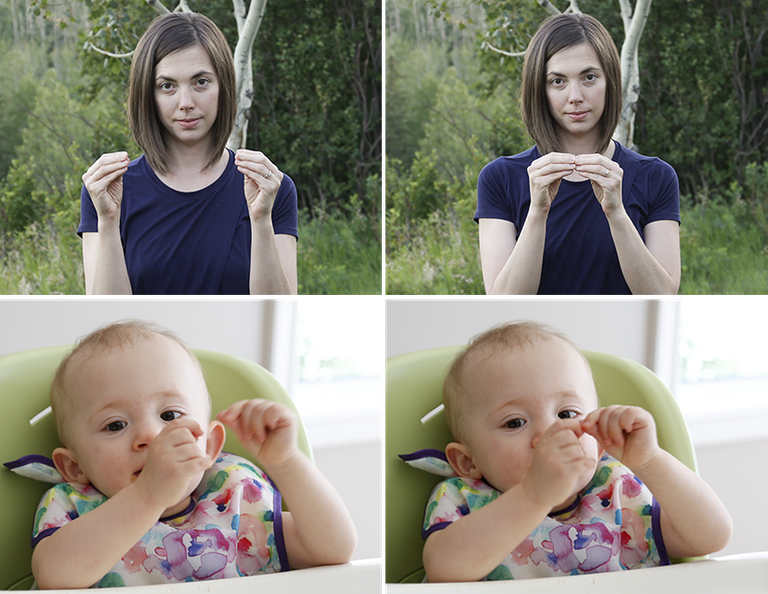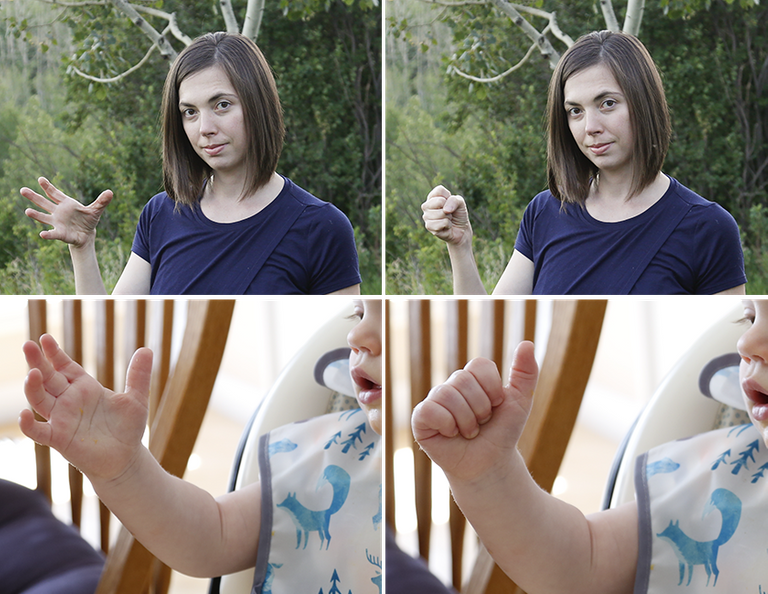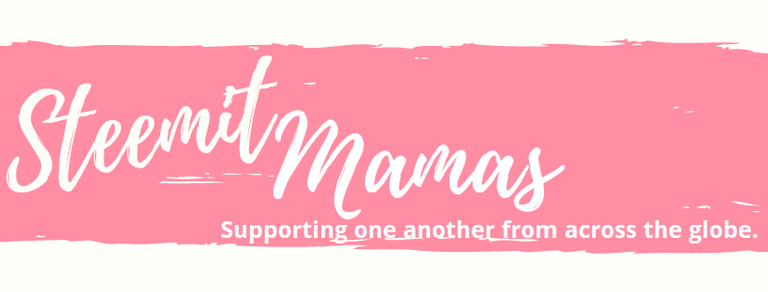Have you ever patiently listened to your child's babble hoping to have a glimmer of understanding? I remember calling the twins first coo's telling stories. I imagined that they were telling me what they thought of this big beautiful world as it slowly came into focus.
Over time, their coo's became more defined and they even began expressing certain tones. We could easily understand when they were happy, excited, or frustrated. Even as we began to recognize these emotions there was still a barrier between us, especially when they were frustrated; were they hungry, tired, cold, itchy? The babble made us feel like we were standing at the Tower of Babel; all trying to reach a common goal but we just couldn't understand one another.
Communication Milestones
4 - 6 Months
- Begins using consonant sounds in babbling
- Makes different sounds to express feelings
- Listens and responds when spoken to
- Uses babbling to get attention
7 - 9 Months
- Increases variety of sounds in babbling
- Recognizes the sounds of the names
- Shows recognition of commonly used words
- Participates in two-way communication
10 - 12 Months
- Meaningfully uses "mama" or "dada"
- Responds to simple directions
- Says one or two words
- Imitates speech sounds
Since babies physical and cognitive development happen at a faster rate than their verbal communication, I decided to capitalize on these skills to help open the doors of communication. At six months we began giving them solid foods and by seven months, when food was becoming more routine and less novelty, we started introducing sign language.
5 Simple Signs for Babies
Using American Sign Langue (ASL), we chose to teach our twins five signs that not only had daily application and were easy actions but could also be used beyond the dinner table:
- More
- Milk
- All Done
- Eat
- Please
In todays post, I am going to cover the first three signs we taught our kids, how we taught them, and how they've helped us on our parenting journey.
ASL: More
 To sign more pinch your thumb and fingers together. Point your hands towards each other and tap your fingers together. I usually tap about three times as I say the word more when asking a question. You can assist your baby by tapping their hands together too, even if their fingers aren't in the "correct" position.
To sign more pinch your thumb and fingers together. Point your hands towards each other and tap your fingers together. I usually tap about three times as I say the word more when asking a question. You can assist your baby by tapping their hands together too, even if their fingers aren't in the "correct" position.The first sign we introduced was "more" because it was something we could demonstrate easily. Throughout mealtime we would ask, Do you want more? as we used the sign. Then, as we gave them additional food we would say, Here's more followed by the sign.
After a few days, we would start helping them practice by moving their hands in a similar manner. For about a week we would almost overuse the sign and assist them in signing "more" between nearly every bite to help them make the connection. In the beginning, I felt like the process was arduous and nearly gave up until my daughter finally used the sign on her own.
Not all babies can master perfect coordination, however, if you are tuned in you may recognize that your baby is giving you a signal of their own. It's okay if your baby doesn't sign perfectly, the ultimate goal is to understand each other.
Our twin boy had a more challenging time signing "more" but we believe he understood that he was getting food regardless and didn't want to waste any unnecessary effort. He would often stretch his arms outwards when he was ready for more, touch the arm of whomever was feeding him or would hand back his utensil, if one was being used. Eventually, he began to bring his hands completely together.
ASL: Milk
 To sign milk begin with an open hand and close it into a fist. This sign is meant to emulate the action of milking an udder. Repeat this action two to three times as you say the word milk. You can help your baby by gently bending their fingers into their palm. If they resist, don't force the action. Instead, keep demonstrating as you speak, they will understand eventually.
To sign milk begin with an open hand and close it into a fist. This sign is meant to emulate the action of milking an udder. Repeat this action two to three times as you say the word milk. You can help your baby by gently bending their fingers into their palm. If they resist, don't force the action. Instead, keep demonstrating as you speak, they will understand eventually.Since our babies were tiny we had them on a strict nursing schedule to ensure they were getting plenty of milk. For this reason, we didn't introduce the sign for "milk" until after they were eating solid foods. Once nursing sessions began to be replaced by mealtimes there was an opportunity for them to ask to nurse outside of the schedule.
We began teaching this sign by using it at the beginning of each nursing session along with the question, Do you want milk? If I noticed either baby was out of sorts, I would ask this same question. Even if they weren't hungry or thirsty, they could turn to nursing for comfort.
Our son was the first of the twins to learn the sign for "milk" and it was his favourite and most used sign of all. Our daughter had a harder time with this action and would rub her thumb back and forth across her fingers instead. Because we weren't looking for perfect execution, recognizing her sign didn't take long.
ASL: All Done
 To sign all done hold your hands in front of you with your palms facing inwards then rotate your hands until your palms face away. You only need to do this action once but for babies repeating the motion while saying all done will help them make the association with the word. Helping your baby with this sign can be challenging so you can encourage them by simply moving their hands apart and together with palms facing downward.
To sign all done hold your hands in front of you with your palms facing inwards then rotate your hands until your palms face away. You only need to do this action once but for babies repeating the motion while saying all done will help them make the association with the word. Helping your baby with this sign can be challenging so you can encourage them by simply moving their hands apart and together with palms facing downward.As I mentioned earlier, I almost gave up sign language until my daughter started signing "more". Once I knew they were understanding me, even if they couldn't preform the action immediately, I began using my signs consistently without expectation; I knew that they would catch on eventually. At the end of each meal I would ask, Are you all done? accompanied by the sign.
My daughters sign for 'all done' is to raise her arms up as high as she can and wave her hands up and down. After a while this sign would used in conjunction with the sound "dah". My son has never signed "all done" but just a few days ago started saying "Oh, doh" mimicking the sound of my words.
Different Applications
The nice part about these signs is how they can be used in a multitude of ways. Truthfully, I hadn't explored using these signs outside of mealtime until my daughter told me she was "all done" being in the stroller. I had taken them for a walk in the park and, since I was enjoying the exercise, I decided to walk longer than I normally would have. My daughter started raising her voice and eagerly signed "all done". I respected her request and ended our walk to let her know I understood her. Of course, our kids don't always get they want but I believe respect is a two-way street.
If either of the twins is engaging in unacceptable behavior, like pulling on cords or opening kitchen drawers, I will say "These are not toys, we are all done." while using the sign as well.
When my daughter is enjoying story time or other activities she will sign "more" to ask that we read another story or continue our current play. Sometimes, she'll even use the "more" sign for milk depending on the setting. If we sit down for naptime cuddles, for example, she may ask to nurse with "more".
Stayed tuned for Part Two when I review the signs for "eat" and "please"
If you are finding the photos difficult to understand, let me know. If there is enough feedback I would be happy to make an accompanying video to further explain these signs.
All photos and illustrations in this post are original work by Mrs. Canadian Renegade.


Ooohhh this is so good!!! Thanks for sharing, my baby is 5 months young so it's a good time to try! Can't wait for part 2! xx
Yes! 5 months is the perfect time to start! Just work the signs in the same way you do speech and it will come so naturally. There are a few more signs I didn't do consistently with my kids that I think would be beneficial to know. I am considering doing a third part just to help out other mamas. Thanks for stopping by. -Aimee
Awesome!
We used the basic signs with our 4 too. It really eliminates so much frustration when they want to communicate, but cant do so verbally.
My 18m old now uses words with her signs.
"Mih mih" is milk.
"Ahh done" all done
"Moh" more
"Nack" for snack/eat
She doesnt say please yet, hi t just rubbs her chest for please 😂
When I think about how much babies have to coordinate just to say these simple words my mind is blown! They really are incredible. I do try to take lots of video and photos so I remember these precious moments but I have also been trying to set my phone aside to live in the moment. They're only little so for long. Thank you for stopping by. -Aimee
This is so interesting. What clever bunnies and I am sure Mama had a big part to play in this because I can imagine the patience you must have had teaching not with one but two.
Thank you for sharing 😊
Yes! Two can be a little more complicated sometimes. I will admit that my daughter picked up the signs faster so I naturally started working with her more. I had to really remind myself to help my son along because he was having a harder time. But now they're both doing really well and I feel like the hard work paid off. Thank you for stopping by. -Aimee
It's very interesting article. I have subscribed to you, I hope for mutual subscription
Hello, I am glad you found this article interesting and I hope it is also useful in your life. Thank you for stopping by. -Aimee
They are so cute....what are their names @canadianrenagade (if it is appropriate place to tell us). I spend hours talk to my kids even now, I love to hear their way of telling things. give big hug for both of them from Aceh
Thank you. We shall call then little R and little H here on Steemit. ❤️ I would be happy to give them an extra hug on your behalf. They're so snuggly. -Aimee
Looking lovely Baby
Posted using Partiko Android
Thank you. -Aimee
The child always brings happiness in life.
I agree! Children add so much joy and make our hearts grow and grow and grow! -Aimee
Breastfeeding mama will have to do a more gentle sign than the "milking udder" one. My little boy is already testing pain levels (not his own)
I laugh but I sympathize. We had a short biting phase and I considered calling it quits. For a while, I thought my daughters latch had really regressed but I discovered I was getting a blocked duct and that was causing my pain. I felt so bad for scolding her so much over the ordeal. She also does gym-nurstics and when I am having to deal with her squirrely-ness and play referee while tandem nursing, my patience runs short. Oh babies, they're amazingly adorable for a reason. 🤣 -Aimee
Amazingly adorable indeed! I don't have pain from biting. I have pain from bed time. I nurse him to sleep but then he doesn't want me to leave so stays attached! It gets pretty raw
Oh no! I do recall those days too. I even reached a point where I would put on some sort of cream or coconut oil and then put plastic wrap over that to help the healing process. My lactation consultant actually recommended soothies to help aid in healing and I found those worked well too. They say you can only use them twice but I would wash them and pop them back in the fridge for several uses and let me tell you, straight out of the fridge sounds awful but it so soothing! Stay strong mama! -Aimee
Funny name. Thanks for the tip Aimee!
I congratulate your patience and dedication to achieve these communication exercises, so you will know for sure what babies want.
Continues to publish and help other mothers.
Blessings. The children are beautiful, they look well loved and cared for.
Thank you! We did out a lot of effort into teaching out little ones sign but it definitely paid off. I sure hope these posts help some other mamas too. Thanks for stopping by. -Aimee